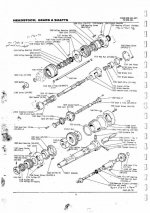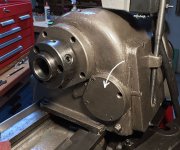Mikel Levy
Aluminum
- Joined
- Oct 19, 2009
- Location
- Seattle
So I need to replace the oil seals on the clutch shaft of my Chippie, but I'm a little apprehensive and would like to know what I'm getting into and any pitfalls to avoid. I have not been able to find any useful information on the internet regarding the replacement procedure. Looking at the exploded view of the clutch shaft assembly in the lathe user manual, I'm not even sure why two oil seals are necessary, when it seems that one would do the trick. Anyway, I have the new oil seals and am ready to start taking things apart. Any guidance on this would be greatly appreciated.
Mike

Mike






